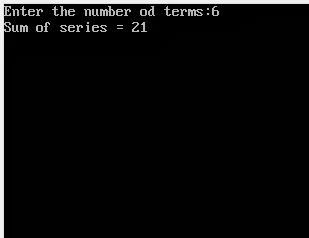After discussing about looping statements in computer programming, programmer should know about jump statements. These statements are used to jump forward/backward, on a given condition. This article will give you a brief overview in c language.
Sometimes, during the execution of a loop it may be desirable to skip execution of some statements or leave the loop when a certain condition occur. For example, during searching process, if the desired item found then there is no need to search further. In such cases, we have to terminate the loop using jump. The various jumps in loops are as follows:
Syntax:
goto label:
Where
main()
{
int n,i,sum;
clrscr();
printf(“Enter the number od terms:”);
scanf(“%d”,&n);
sum=i=0;
top: sum=sum+i;
i=i+1;
if(i<=n) goto top;
printf(“Sum of series = %d”,sum);
getch();
}
Consider the following program segment:
i = 1;
for(; ; )
{
if(i==5) break;
printf(“%d”,i++);
}
In the given for loop, there is no initialization, condition and re-initialization part. Such loop is called as infinite loop. Even though it appears as an infinite loop, as the value of i reaches to 5, the control immediately comes out of the loop. When the value of i is compared with 5, the break statement is executed and the control immediately comes out of the loop.
But, the execution continues with next iteration of the loop. In the while statement and do-while statement, whenever a continue statement is executed, the rest of the statements within the body of the loop are skipped and the conditional expression (conditional statement) is executed. But, in for loop, the updating statement will be executed. For example, consider the statements shown below:
for(i=1;i<=5;i++)
{
if(i==2) continue;
printf(“%d”,i);
}
Note that when i takes the value 2, the continue statement is executed and the statements following continue are skipped. The control is transferred to updating i.e. i++ statement and the execution continues from that point. The output of this program is 1 3 4 5.
Difference between break and continue statement
Array in Computer Programming
Sometimes, during the execution of a loop it may be desirable to skip execution of some statements or leave the loop when a certain condition occur. For example, during searching process, if the desired item found then there is no need to search further. In such cases, we have to terminate the loop using jump. The various jumps in loops are as follows:
goto statement
goto statement is a jump statement that transfers the control of the specified statement in a program. This is an unconditional branch statement. The specified statement is identified by a symbolic name (any identifier) ending with colon ':'.Syntax:
goto label:
Where
- goto – is a reserve word or keyword
- label – is an identifier ending with colon ‘:’
- Using goto statement in a program is an unstructured programming style.
- The unstructured program written using goto statement are very difficult to read and understand.
- It is also very difficult to debug the program.
main()
{
int n,i,sum;
clrscr();
printf(“Enter the number od terms:”);
scanf(“%d”,&n);
sum=i=0;
top: sum=sum+i;
i=i+1;
if(i<=n) goto top;
printf(“Sum of series = %d”,sum);
getch();
}
Break Statement
The break statement is another jump statement which is frequently used in switch statement and loops. The break statement works as follows:- The 'break' statement is part of switch statement causes control to exit the switch statement. Usually, in any case, the break statement will be the last statement.
- If break is executed in any type of loop like for, while or do-while, the control comes out of the loop and the statement following the loop will be executed. The break statement is used mainly to terminate the loop when a specific condition is reached.
Consider the following program segment:
i = 1;
for(; ; )
{
if(i==5) break;
printf(“%d”,i++);
}
In the given for loop, there is no initialization, condition and re-initialization part. Such loop is called as infinite loop. Even though it appears as an infinite loop, as the value of i reaches to 5, the control immediately comes out of the loop. When the value of i is compared with 5, the break statement is executed and the control immediately comes out of the loop.
Continue statement:
The continue statement is used only in the loops to terminate the current iteration. During execution of a loop, it may be necessary to skip a part of the loop based on some condition e.g. during processing of student records, it may be necessary to exclude student names whose marks are less than or equal to 35. In such case, a test is made to see whether the marks scored are less than or equal to 35. If so, the part of the program that processes the student details can be skipped using continue.But, the execution continues with next iteration of the loop. In the while statement and do-while statement, whenever a continue statement is executed, the rest of the statements within the body of the loop are skipped and the conditional expression (conditional statement) is executed. But, in for loop, the updating statement will be executed. For example, consider the statements shown below:
for(i=1;i<=5;i++)
{
if(i==2) continue;
printf(“%d”,i);
}
Note that when i takes the value 2, the continue statement is executed and the statements following continue are skipped. The control is transferred to updating i.e. i++ statement and the execution continues from that point. The output of this program is 1 3 4 5.
Difference between break and continue statement
Array in Computer Programming



